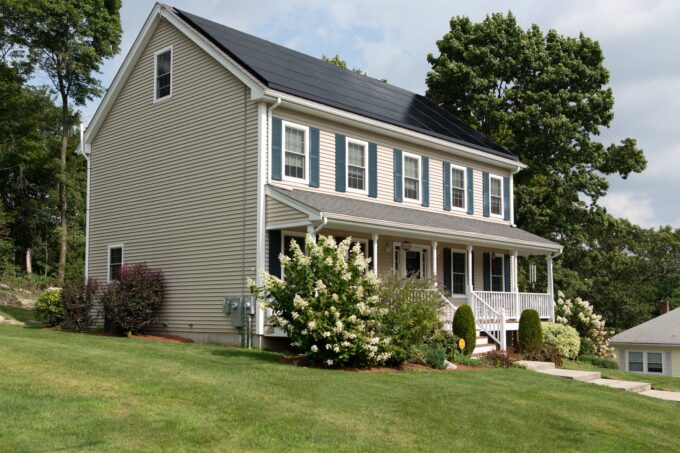
Homebuilders are increasingly recognizing the benefits of energy-efficient features in their new homes. These green building practices help reduce family energy usage and carbon footprints.
Energy efficiency features include LED and compact fluorescent bulbs and ENERGY STAR appliances. Also, HVAC systems are properly sized so they do not overwork.
Lower Energy Bills
Having energy-efficient features in a new home is a great way to reduce your environmental footprint. But that’s not all these green improvements have going for them—they can also save you serious money monthly and yearly.
With rising energy costs, more and more families consider sustainability when buying a house. That’s why many home builders are offering a variety of eco-friendly options. These options include insulation, energy-efficient appliances, and renewable energy systems like solar panels.
Home builders know that their customers care about more than just the environment and are willing to pay a premium for a sustainable home. So they focus on reducing energy consumption in every aspect of the construction process. They use materials with a higher R-value and ensure that all empty spaces are filled with insulation to prevent heat loss.
Davidson Homes install energy-efficient appliances certified by an organization such as ENERGY STAR. And they help customers understand how to keep their home energy bills low with a comprehensive energy audit.
These strategies combine looking at the big picture, such as insulating your house well, with changing small daily habits like turning off lights or shortening showers. They might even add a smart home system to enable homeowners to manage their heating, cooling, and lighting from the comfort of their cell phones.
Reduced Carbon Footprint
Reducing energy use lowers greenhouse gas emissions. When a home is built to be energy efficient, it requires fewer resources like water and electricity. This decrease in consumption also reduces the waste products that produce greenhouse gases and other pollutants.
Purchasing a green home not only reduces your family’s carbon footprint. At the same time, you live there, making maintaining a lower environmental impact easier after you move on. Many banks view green homes more favorably when approving loans for new construction, so it’s an investment that pays off.
Efficient heating and cooling systems, ENERGY STAR-certified appliances, effective insulation, tight ducts, and wiring for electric vehicle charging are just a few ways to make your home greener. Aside from these, you can make many other lifestyle choices to reduce your carbon footprint. For example, you can switch to LED bulbs and recycle more. You can also reduce meat in your diet, carpool, or ride public transit when you need to get around and have fewer children.
Today’s new home buyers want energy-efficient homes that meet or exceed the insulation or R-values codes. Contractors who use innovative materials insulated concrete forms (ICF) and take a whole-building system approach can provide these high-performing homes for their customers. Millennials, in particular, demand these homes because they save money, are more comfortable, and protect the environment.
Increased Resale Value
As climate change continues to become a more pressing issue in the United States and worldwide, buyers are increasingly willing to pay more for homes with energy-efficient upgrades. According to a 2021 consumer housing trends report, 67% of potential homebuyers rank energy efficiency as one of a new home’s “essential” features.
Energy-efficient improvements, like a high-efficiency HVAC system, solar panels, and upgraded windows and doors, not only help to reduce your utility bills but also increase your home’s value. A recent mortgage lender study showed that homes with an energy-efficient rating sold for almost 3% more than similar homes without an energy-efficient designation.
The most cost-effective and highest return energy upgrade project is attic insulation, saving homeowners up to $116 per year on heating and cooling costs. However, many other green projects can boost your home’s resale value, such as solar panels and water heaters, as well as the home energy score and LEED certification.
As the demand for green homes and buildings continues to rise, so does the resale value of these features. Discuss your energy efficiency upgrades with a qualified home inspector before you buy or sell your home. It will help ensure you get the best return on investment possible and identify and address any potential issues before they become costly problems.
Increased Comfort
When building a new home, energy efficiency is a top priority for many homeowners. It’s a great way to reduce waste, carbon footprint, and energy use while boosting resale value. Energy-efficient features include various products, from the materials used to build your home to major appliances like water heaters, refrigerators, and washing machines.
The latest energy-efficient homes have smart technology that manages indoor temperatures to maintain ideal conditions and reduce the amount of energy needed. For example, a thermostat can be programmed to lower temperatures at night and while people are away while maintaining comfort when you’re home. Smart thermostats also monitor and adjust airflow to ensure consistent temperatures throughout the house while reducing humidity levels.
Additionally, builders using energy-efficient building supplies and construction methods can increase your comfort with Fox Blocks ICF walls that create a continuous insulation barrier against cold or hot spots. It prevents moisture from entering the wall system and creating mold, significantly improving indoor air quality.
The benefits of energy-efficient features go far beyond eco-conscious sensibilities and lowering energy bills. These state-of-the-art appliances and systems improve your home’s comfort, health, and resale value.














